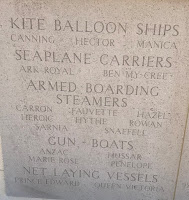In which Sid and Doris evade Istanbul traffic with their very own trip to Gallipoli
Having discovered how hard it is to cycle into Istanbul we have decided not to cycle out. But our cunning ruse of subscribing to an organised Tour of Gallipoli and Troy meant that at 7am we and the neddies were travelling in fine style in a VW Caravelle. We have been going 90 minutes before you could say we are out of Istanbul, and any mild regrets we may have had on abandoning the D100 after Edirne are thoroughly put to rest. Istanbul is a big place and has no weasel way out on small roads – unlike the route we took out of London on our ride to Paris – we passed several cyclists going down the hard shoulder which emphasises that point in a flourish of old diesel smoke.
We are being taken to the Gallipoli peninsula where we will be joined by a guide to the battle fields and memorials. We had thought we would be joining some larger group but we have driver, minibus and guide to ourselves. The guide teaches at the college in Cannakale, on the other side of the Dardanelles.
First stop is a newish museum. While there is some English the museum is for the Turks. The rise of Mustafa Kemal at Gallipoli is part of the founding myth. Maybe three million Turks come each year to see where they fought off the British, the French and their Empires – “the most visited site by Muslims after Mecca” was the claim. The Turkish story then goes on to deal with events after the war, the continuing fight against the allies and the eventual rise of Turkey from the fallen Ottoman Empire (though not covered in this museum).
The museum had a gate guard and so here is a picture of a not very convincing recreation of an Albatross (?). PIC.
The broad plan was that the Allies should march to Istanbul, put the Ottomans out of the war and open the route to Russia and the Ukraine’s bread basket. After an unsuccessful navy-only attempt the Turks had time to get men to the region before the infantry campaign started. The Turks rushed over to the landing sites and quickly got well dug in on the higher ridges and hills. Generally the military reckon to require three times as many attackers as defenders to prevail. The numbers were about even, the Mehmets had easier logistics than the Tommies and the Diggers (Australians). None of the first days’ objectives was ever taken despite months of fighting and horrific losses from disease as well as fighting. So the allies eventually withdrew, successfully with (for the first time in the whole campaign) very few casualties.





 We went to the sites of the original spring 1915 landings, Anzac Cove, Lone Pine, Chunuk Bair and Helles cemetery. The dead are listed by type of unit, then unit, then rank. The photos here are from a wall where the units that kept the sharp end working are commemorated. Mule drivers from undivided India, the bakeries, the MPs who came from Burma, the stationery office all played their part and died with the rest, many from dysentery rather than bullets. Our pictures don’t even start to do it justice, you should add it to your list of places to visit. (For the cliff picture, the caption is “Just charge up there, lads”.)
We went to the sites of the original spring 1915 landings, Anzac Cove, Lone Pine, Chunuk Bair and Helles cemetery. The dead are listed by type of unit, then unit, then rank. The photos here are from a wall where the units that kept the sharp end working are commemorated. Mule drivers from undivided India, the bakeries, the MPs who came from Burma, the stationery office all played their part and died with the rest, many from dysentery rather than bullets. Our pictures don’t even start to do it justice, you should add it to your list of places to visit. (For the cliff picture, the caption is “Just charge up there, lads”.)

There are coachloads of people at the Turkish cemetery that we visit last of all, the memorial to the extraordinary levels of losses in the 57th Regiment which is part of the Ataturk legend. This and the Commonwealth War Graves are immaculate.

The campaign led to an unforeseen long-term friendship between the Turks and the Australians/New Zealanders, both of whom saw it as someone else’s stupid idea to start the fight, and both of whom see it as the birthpoint of their nation. Anzac Cove is highly revered and annual commemorations are held there, attended by both sides. (See here for example) The symbol for the whole Gallipoli campaign is a Turkish soldier carrying a badly-wounded Anzac soldier back to his own lines to be treated.
We withdrew from the trenches – which are still there, with a shockingly small field of battle to hold tens of thousands of dead bodies – to the ice cream shop and so back to our hotel in Eceabat.
 No #virtualsouvenirs but here is a #virtualpostcard. In fact this whole blog is really a #virtualpostcode.
No #virtualsouvenirs but here is a #virtualpostcard. In fact this whole blog is really a #virtualpostcode.
This feels very Med. The soil is sandy and we have those frilly pines by the road.
The hotel is handy for the port and has both a bed and a shower. Tomorrow we will be on the ferry to Asian Turkey and Troy, with a new guide.